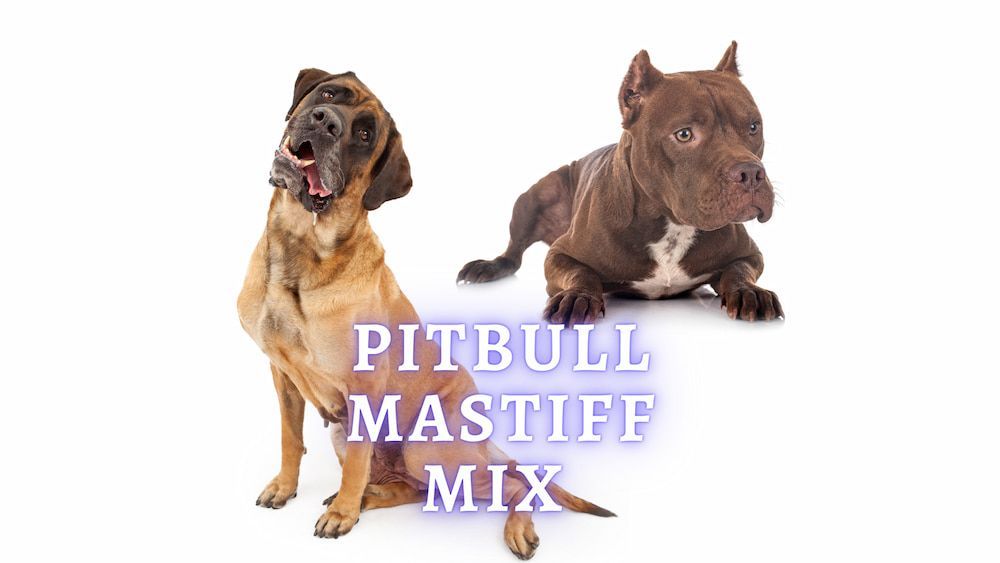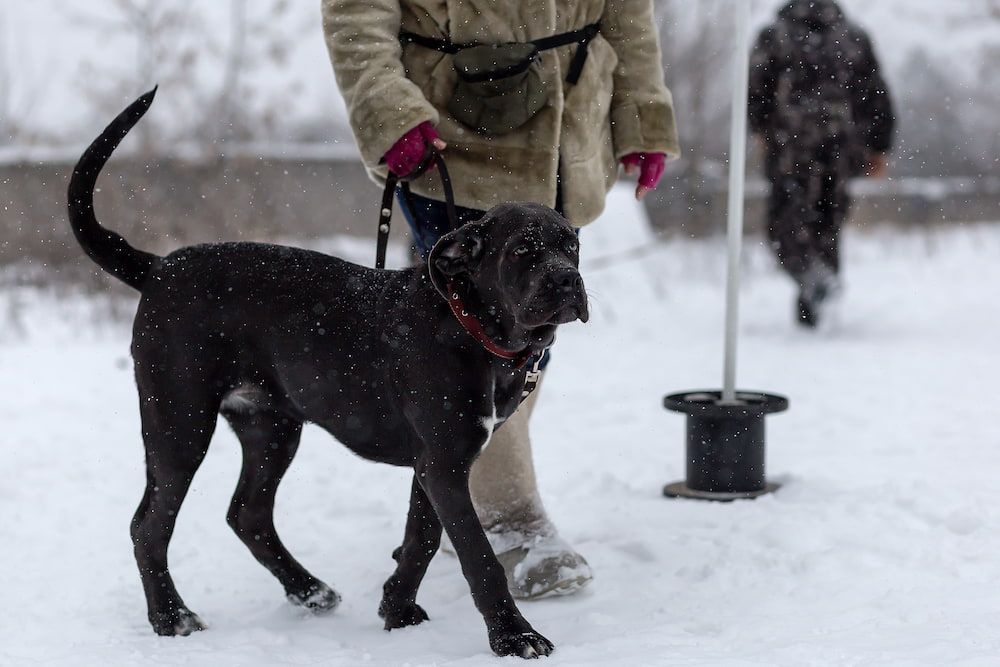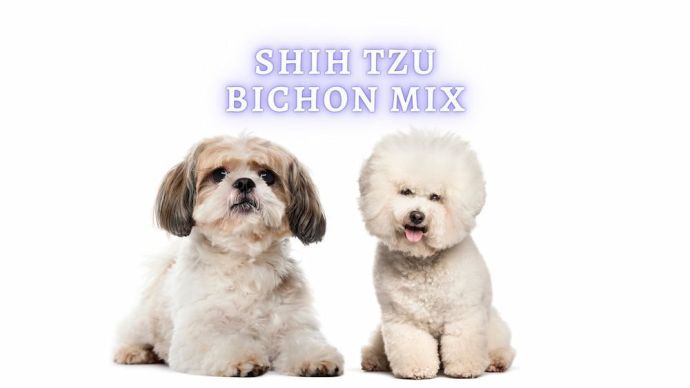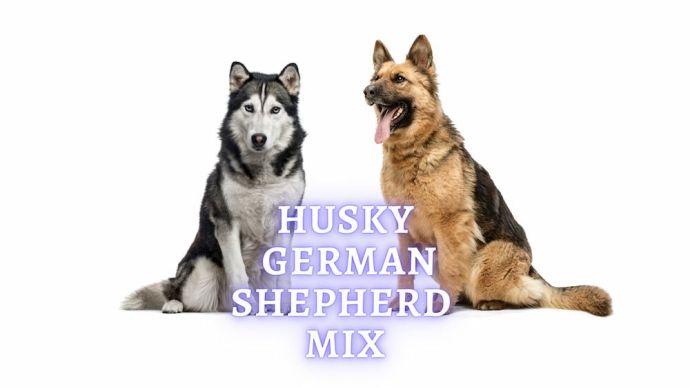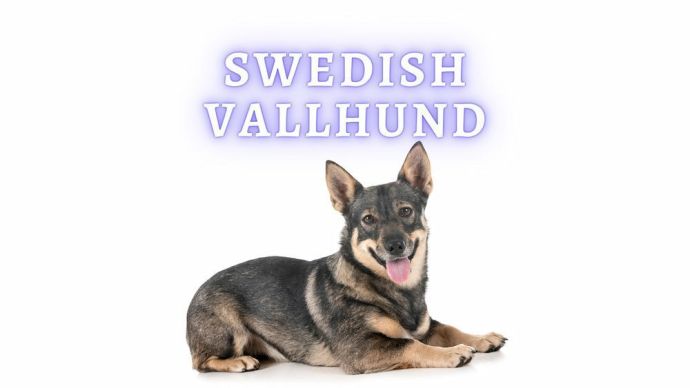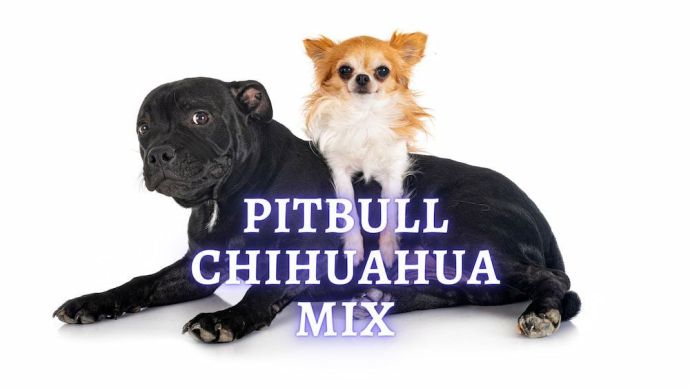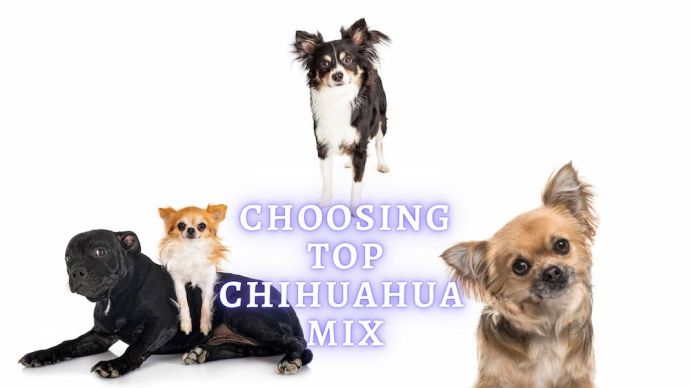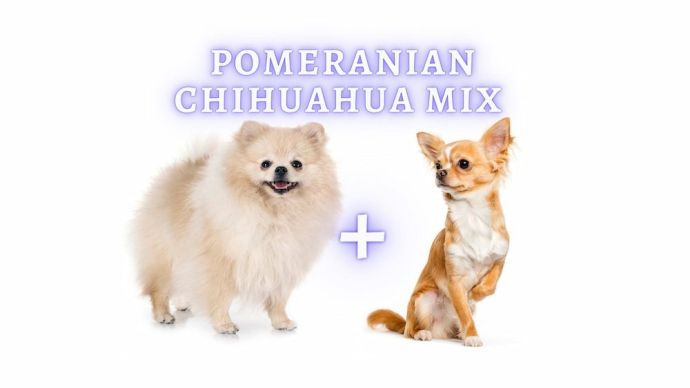Pitbull Mixed With Bull Mastiff Lifespan, Health and Temperament
Written by:
Author: Scott Jeffrey
Scott is a professional blogger with 12+ years of experience in writing, and holds an MA in anthropology. He has two cats as housemates. Also, Scott is passionate to research on pet-related topics such as dog training, puppy feeding, and cat health.
View all 63 articlesLearn about our editorial process and veterinary review board.
Viewed: 144
Updated on: 01/13/2023
A breed that has become more common in recent years is the Pitbull Mastiff mix. This mix combines the strength and tenacity of the Pitbull with the loyal, good-natured demeanor of the Bull Mastiff, creating a formidable and affectionate companion. This breed profile will explore what to expect from these dogs and how to best care for them.
Bullmastiffs are some of the sweetest dogs in the world despite their size, and in this hybrid, breeders are finding they can get the calm and gentle demeanor of a mastiff with the more muscular and trim body of the Pit Bull. The scaledown in size often leads to a longer life expectancy and a loyal dog. This hybrid breed is friendly and more athletic than a traditional mastiff.
Pitbull mastiff mix dogs are best taken on by an experienced pet owner and someone that has older children. They can be powerful dogs and stubborn to train, making them better suited to pet owners that have had other large breed dogs before.
If you are seeking a larger guard dog or a companion for an active lifestyle, the Pitbull Mastiff mix might be the perfect fit. This breed hybrid is good with other animals, including cats and small dogs but needs to be socialized well from puppyhood to prevent aggression.
Let’s dive deeper into what makes the Pitbull Mastiff Mix such a special dog.
Characteristics
| Weight | 80-140 lbs |
| Height | 20-29 inches |
| Colors and patterns | Brown, Brindle, Black, Red, White |
| Best for | Active families with older children and experience with dogs |
| Temperament | Friendly and loyal. Good with other pets, with socialization early |
| Grooming | Regular brushing, some shedding |
| Lifespan | 10-12 years |
Breed History
The breed has an extensive history due to its large classification. They are a hybrid breed between the pit bull and the mastiff. The Bullmastiff, or pitbull mastiff as they are sometimes known, has been around for quite some time. They have been used historically as guard dogs and family pets.
The breed started appearing in the 18th century and was created in the UK. The mastiff pitbull mix breed became recognized in the 19th century, but the breed was created a century before. The breed was raised primarily as a guard dog and for hunting large wildlife.
Older stories about the breed had them as guard dogs that would chase down poachers to pin them to the ground, holding them with their weight until authorities arrived. They are excellent companions and respond to commands well when trained at an early age.
The AKC does not recognize the hybrid breed of the Bullmastiff and pit bull, but the Bullmastiff breed has been recognized by the American Kennel Club since 1934 even though it got started as a hybrid breed.
Interesting Facts
They can come from a series of different crossbreeds:
Even though a mastiff and pitbull cross can carry many names, they can be created out of different types of crosses. Pitbull mastiff puppies can come from Neapolitan mastiffs, bulldogs, English mastiffs, and American Pit Bull Terriers as a crossbreed. The type of pitbull and mastiff may change, and each dog’s look can vary based on its lineage and the breeds included in it. The mastiff pitbull mix can vary based on the adult pitbull mastiff mix chosen. It can be hard to tell how they will look as a pitbull mastiff mix puppy and it is often best to see the mastiff pitbull mix as a parent of the pit mastiff if dogs are available at the breeder.
They thrive with space:
The Pitbull mastiff breed thrives with some extra space. They can often grow upwards of 140 lbs and up to 29 inches tall. Having the extra space to move around is important for these large dogs. These aren’t super active breeds, but they do like to run from time to time.
Mastiff pitbull mixes are a dog breed that does well with other dogs in a backyard as long as the pitbull mastiff mix puppy gets to spend time with other dogs during its early training.
They aren’t good for small kids:
Because pit bull mastiff is so large and often unaware of their size, they aren’t recommended for small kids. They tend to get excited and bowl people over when they are overwhelmed. Training is crucial to prevent them from jumping up and ensuring they can interact with kids or older adults without unintentionally using their weight.
They shed moderately:
The mastiff pitbull mix coats require minimal maintenance. As a shorter-haired breed, many wouldn’t think of them as high shedders, but pitbull mastiffs do shed moderately throughout the year. Regular brushing will help to keep their coats healthy and reduce shedding in the home.
They are super stubborn:
Both Pitbulls and mastiffs are known to be stubborn breeds making this hybrid breed one of the most stubborn of all. Training them can be difficult and sometimes frustrating for pet owners that don’t have experience with larger breeds. They are smart dogs but can take a bit more patience when training.
They are great guard dogs:
The breed dates back hundreds of years as a guard dog and is still used as excellent guard dogs today. They have an excellent sense of smell and hearing. As a giant dog, the mastiff pitbull mix serves as an intimidating force, even if they are gentle giants. They will protect their family with loyalty but need to be socialized properly to prevent any overly aggressive behavior when they are young.
Temperament:
Although they look quite intimidating, the pitbull mastiff breed is one of the world’s most caring and affectionate dogs. They love to be with family and the pets they were raised with, and they can often try to be lap dogs even with their enormous size.
They are very calm dogs and can be quite content to nap around the home when they get their regular food and exercise. They can be very focused when they have a task, such as being a guard dog or assisting in a hunting task.
Even though they are large dogs, they can be somewhat distrustful of new situations and new people. They need to be introduced to new areas and socialized with other humans and animals to ensure they are not overly skittish or aggressive in these situations.
They also don’t do well with change and can react to changes in the house as threats. A cord or object placed underfoot could make them shy or skittish if they don’t have time to adjust properly.
Watching them closely while playing with other dogs or children can be important because they are often unaware of their size. If things get a bit rough or the Bullmastiff throws their weight around, it could be time to pause playtime to give them a breather.
Activity:
These dogs are best for people that want a moderate level of activity. They will need regular walks and usually about an hour of exercise daily. They are not a highly active breed like a border collie, but with their size, they need regular and vigorous exercise to prevent weight gain.
Time at the dog park or taking long walks can be a wonderful way to keep them active. Mastiff, Pitbull breeds also love to play fetch and can be quite content to chase a ball around for hours.
While your dog is a puppy, it is usually best to do activities in short and controlled sessions to help them from playing too rough. As these dogs grow, they also need shorter rounds of activity while their hips form. Because they can grow fast, too much pressure on the joints can cause extra pain with extended activities.
Pittbull mastiffs are also very intelligent and can thrive when they get regular mental stimulation, like learning new tricks, trying obedience commands, and exploring new places. Puzzle toys may be too small for this breed, but they love interacting with their owners and playing games.
These dogs make for good family pets but need the proper training and socialization from a young age. With their loyalty and affectionate nature, they often become devoted members of the family that will always be there to protect them. They do best with owners that understand the size and strength of this breed and can provide them with a structured and safe environment. With the right training, they can be calm, happy members of any home.
RELATED: Best Food for Large Breed Dogs
Lifespan and Health Issues
The breed is generally healthy, but as with any mixed breed, there can be various health issues associated with the parent breeds involved. The most common health issues to look out for include hip dysplasia, allergies, and heart conditions. Regular checkups with your vet will ensure that any potential medical problems are caught early.
The average life expectancy of a pitbull mastiff is between 10-12 years, although some can live longer with proper care and nutrition.
Care
The breed has short coats which are easy to groom and maintain. Their coats do shed moderately, so regular brushing is recommended to keep the shedding levels at bay. Bathing can be done as needed, but there is no need for complicated trimming or clipping required for the breed.
The American Masti Bull will need many calories in a day, especially as they are growing. Most adult dogs will need 4.5-6 cups of dog food each day, and making sure to space out the food will ensure that you can prevent bloat. The puppies will eat very quickly, so spacing out their feeding or soaking their kibble can help to prevent stomach problems.
READ MORE: Best Food for Large Breed Puppies
Exercise:
Pittbull and mastiff mixed breeds are moderate-energy dogs that need regular exercise to stay healthy and happy. They will do well with a daily walk or two around the neighborhood and off-leash playtime in the backyard or at the local dog park.
Vigorous exercise where they can run or explore new areas is best for these dogs, but it should be done in short bursts and not for extended periods. This breed can tire quickly if over-exerted, so rest them when needed.
Training:
The Training process for a pitbull mastiff mix is a bit more involved than with other breeds. As a large and powerful breed, this mix can need firm direction and authority from an early age.
Positive reinforcement training is always best for the breed, as they do not respond well to negative punishment. Training should be done in short, controlled sessions focusing on basic obedience commands like sitting and staying. Reward-based training is usually the best way with this breed, as it allows them to learn quickly and respond better to commands.
Make sure you are socializing a Pit Bullmastiff early on because this is a large breed dog; they need to have patience with other smaller dogs and children. By introducing them to new people and places in a controlled way, you can help them to become comfortable with the world around them. This breed is adaptable and will do well in many different environments.
Rescue:
Pitbull rescue programs will occasionally have pitbull mastiff mixes available for adoption. Before committing to a rescue dog, it’s essential to research the breed and make sure that you are prepared to provide them with the care they need.
The best way to find a pitbull mastiff mix is through local rescues or pet stores. Adopting a rescue and ensuring you get the right breed may involve placing your name on a list for that specific breed and taking an interview with the rescue organization.
Most rescue programs will want to ensure that you have experience with large breed dogs, have enough space, and that your environment will be safe for the dog to live in. If you have a house with a yard and some experience training larger breed dogs, the rescue program will likely identify you as a great candidate for a pitbull mastiff mix.
How Much Does a Bullmastiff Mix Cost?
The cost of the breed can vary depending on the parents and the breeder. Generally speaking, these mixes should cost anywhere between $1500-2500. The mastiff and pitbull mix can sometimes be a bit cheaper than a traditional Bullmastiff, but English bulldog and mastiff mixes can be more expensive.
As the Bullmastiff is a registered breed, you can sometimes expect to pay more for puppies if they come from a line of successful show dogs.
Make sure to research the breeder you are considering and their puppies before committing. It’s essential that the breeder is reputable and provides information on the pup’s parents and health testing certificates. This will help to ensure that you are getting a healthy pup and not one with any potential health issues.
READ MORE: American Bulldog vs Pitbull
Pros and Cons of Owning Pitbull Mastiff:
Pros
Cons
- Loving and loyal companion
- Can adapt well to different environments
- Smart and obedient
- Low-maintenance grooming needs
- Good for active owners
- Not suitable for small kids
- Can be stubborn to train
- They want to be lap dogs even with their immense size
FAQ:
How big will a Pitbull Bullmastiff get?
An adult mastiff and pitbull mix can grow to 29 inches tall and 140 lbs. Some instances of larger versions of this breed can occur when their mastiff parents are larger as well.
Is a Pitbull Mastiff Mix a good dog?
A pitbull mastiff can be a very good dog and one of the most loyal companions you can have. To prevent aggressive behavior and to keep them calm, you need to train them early on and socialize them appropriately. Without proper training, the breed can tend to be aggressive and may not be suitable for families with small children.
What is the life expectancy of a Pitbull Mastiff mix?
The average lifespan of a mastiff and pitbull mix is 10-12 years. They can live longer than the average life expectancy with proper care, nutrition, exercise, and regular vet visits.
What is a Pitbull Mastiff Mix called?
A pitbull mastiff can have many different names, including the American Bulldog, Pit Mastiff, and Bullmastiff. Whatever you choose to call them, they are a beautiful mixed breed with an endearing personality that can make for a great family companion.
Is a Pitbull Mastiff a good family dog?
The pitbull mastiff can be a good family dog if they are appropriately trained early on. This can involve regular socialization among pets and people in the house. The breed does not always do best with young children because they are not always aware of their size. They can be loving and loyal if given the right training and socialization.
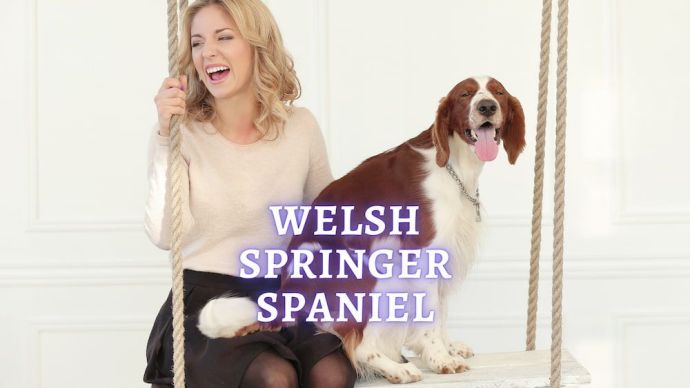 Dog Breeds Welsh Springer Spaniel: Welsh Springer Spaniel Temperament, Care and Diet
Dog Breeds Welsh Springer Spaniel: Welsh Springer Spaniel Temperament, Care and Diet - 149
- 0
 Dog Veterinary Tips Why is my Dog throwing up: Causes and Preventing (Veterinary Advice)
Dog Veterinary Tips Why is my Dog throwing up: Causes and Preventing (Veterinary Advice) - 23424
- 5
 Dog Care Why Is My Dog Bleeding From Its Butt? Causes and treatment of rectal bleeding in the dog
Dog Care Why Is My Dog Bleeding From Its Butt? Causes and treatment of rectal bleeding in the dog - 22075
- 0
 Dog Care My Dog Keeps Scratching His Mouth: Reasons Why Your Dog Scratching Face
Dog Care My Dog Keeps Scratching His Mouth: Reasons Why Your Dog Scratching Face - 17561
- 1









